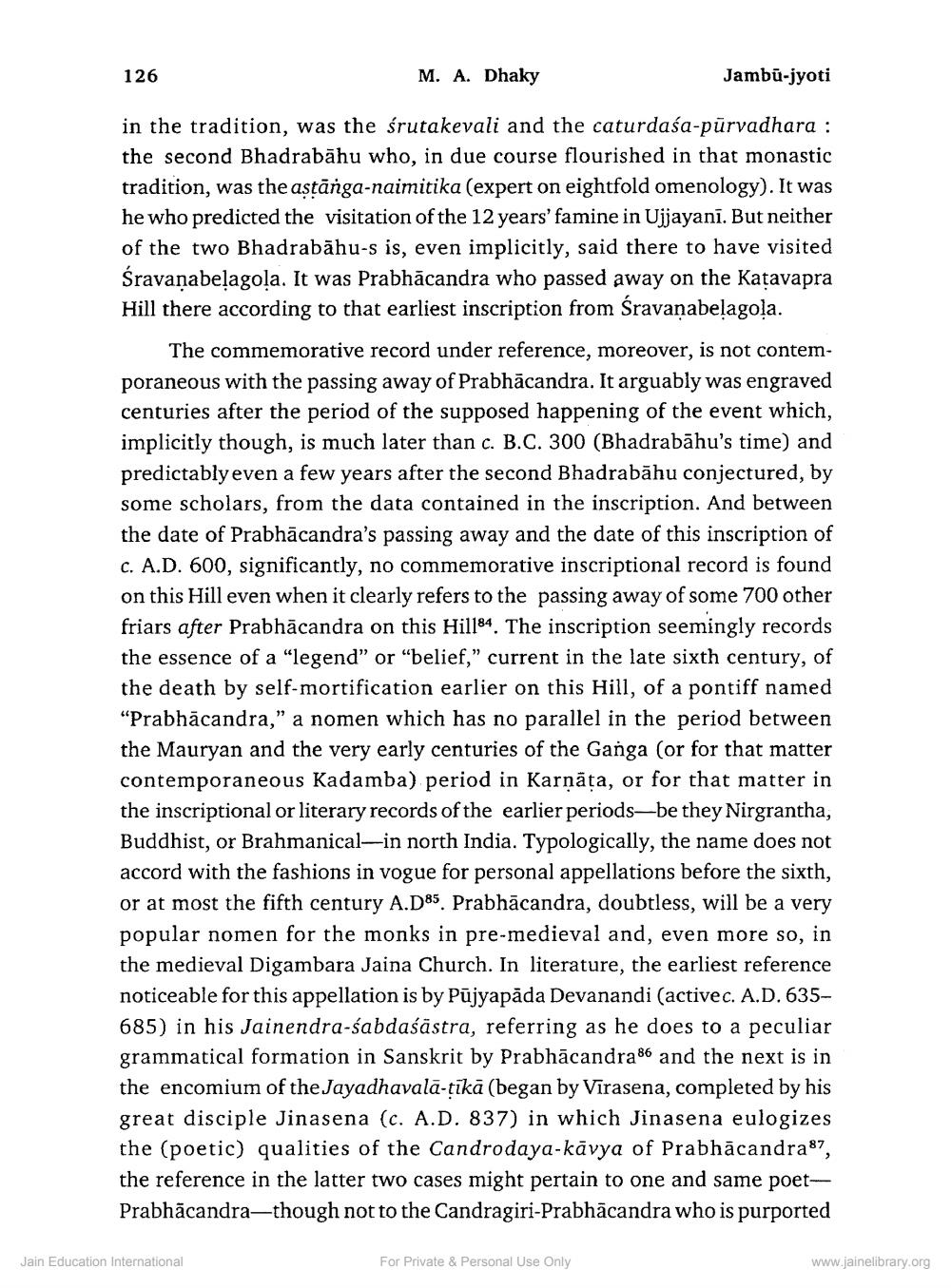________________
126
M. A. Dhaky
in the tradition, was the śrutakevali and the caturdaśa-pūrvadhara : the second Bhadrabahu who, in due course flourished in that monastic tradition, was the aṣṭānga-naimitika (expert on eightfold omenology). It was he who predicted the visitation of the 12 years' famine in Ujjayanī. But neither of the two Bhadrabāhu-s is, even implicitly, said there to have visited Śravanabelagola. It was Prabhācandra who passed away on the Katavapra Hill there according to that earliest inscription from Śravanabelagola.
Jain Education International
Jambū-jyoti
The commemorative record under reference, moreover, is not contemporaneous with the passing away of Prabhācandra. It arguably was engraved centuries after the period of the supposed happening of the event which, implicitly though, is much later than c. B.C. 300 (Bhadrabahu's time) and predictably even a few years after the second Bhadrabāhu conjectured, by some scholars, from the data contained in the inscription. And between the date of Prabhācandra's passing away and the date of this inscription of c. A.D. 600, significantly, no commemorative inscriptional record is found on this Hill even when it clearly refers to the passing away of some 700 other friars after Prabhācandra on this Hill84. The inscription seemingly records the essence of a "legend" or "belief," current in the late sixth century, of the death by self-mortification earlier on this Hill, of a pontiff named "Prabhācandra," a nomen which has no parallel in the period between the Mauryan and the very early centuries of the Ganga (or for that matter contemporaneous Kadamba) period in Karnata, or for that matter in the inscriptional or literary records of the earlier periods-be they Nirgrantha, Buddhist, or Brahmanical-in north India. Typologically, the name does not accord with the fashions in vogue for personal appellations before the sixth, or at most the fifth century A.D85. Prabhācandra, doubtless, will be a very popular nomen for the monks in pre-medieval and, even more so, in the medieval Digambara Jaina Church. In literature, the earliest reference noticeable for this appellation is by Pujyapāda Devanandi (activec. A.D. 635685) in his Jainendra-sabdaśästra, referring as he does to a peculiar grammatical formation in Sanskrit by Prabhācandra86 and the next is in the encomium of the Jayadhavala-ṭīkā (began by Virasena, completed by his great disciple Jinasena (c. A.D. 837) in which Jinasena eulogizes the (poetic) qualities of the Candrodaya-kāvya of Prabhācandra87, the reference in the latter two cases might pertain to one and same poetPrabhācandra-though not to the Candragiri-Prabhācandra who is purported
For Private & Personal Use Only
www.jainelibrary.org




